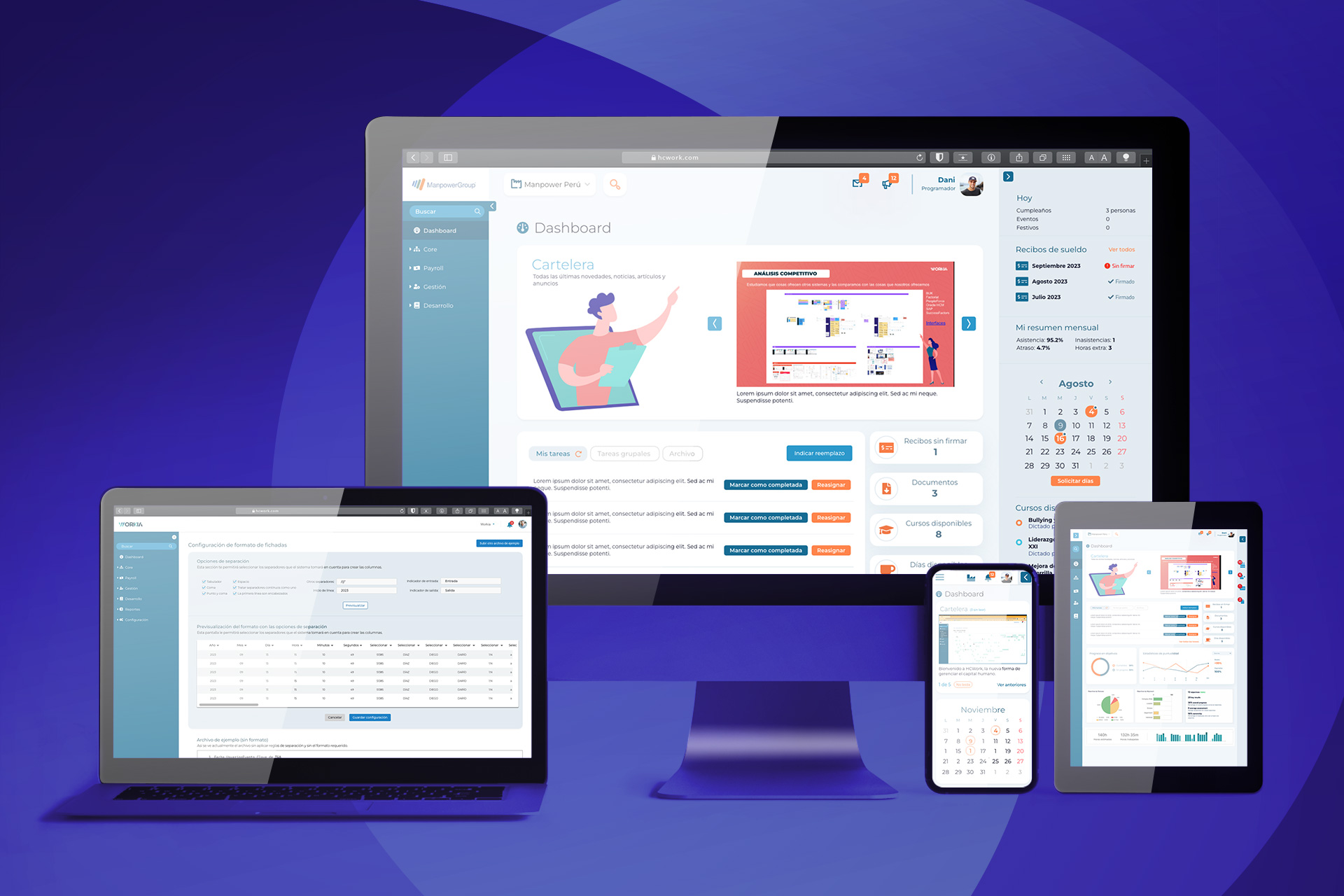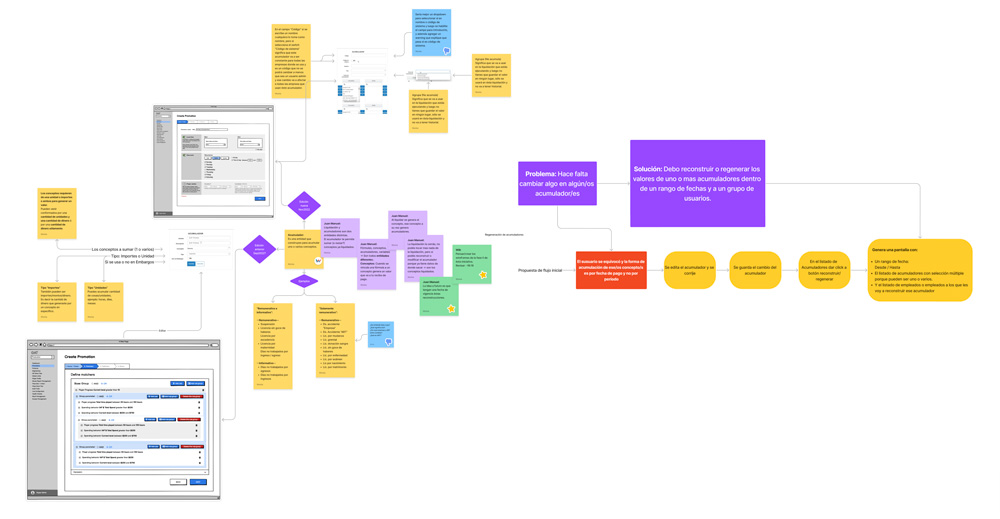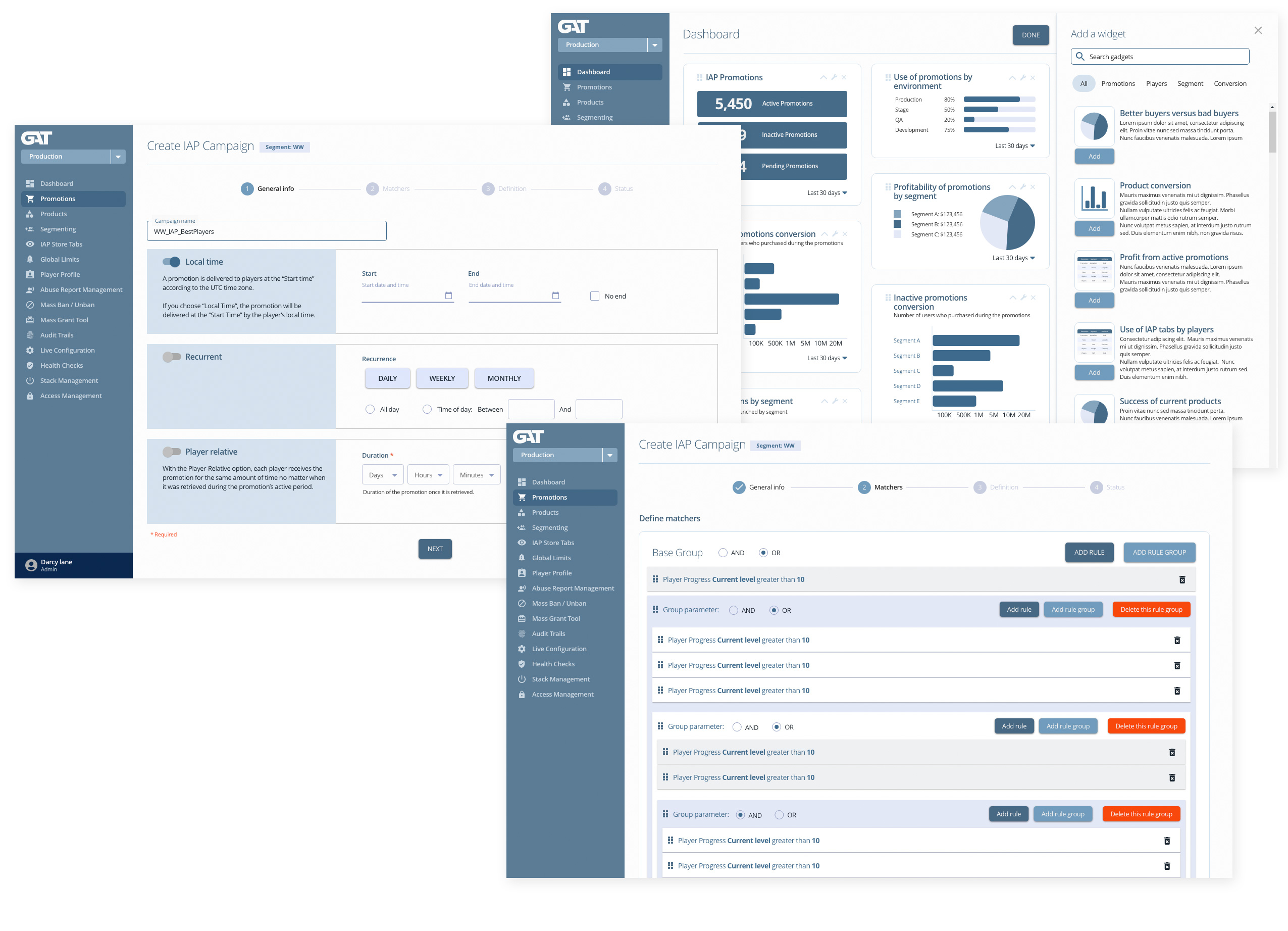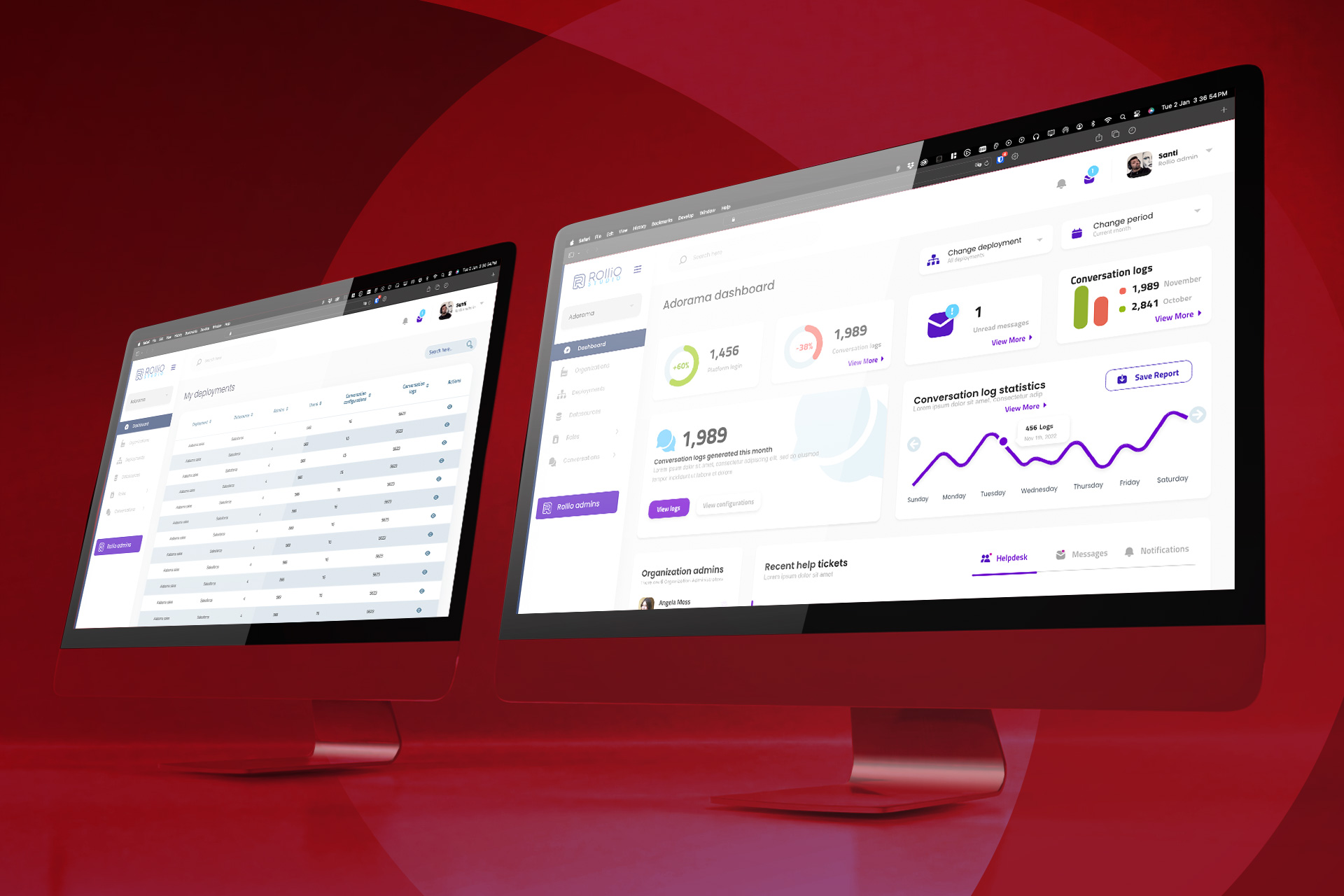MY ROLE
- Product Design
- UX/UI Design
- User Research
PROJECT
Complete HR SaaS solution B2B B2C
TEAM
- 5 POs
- 6 TLs
- 5 BAs
- +/- 30 Devs
- 1 Product Designer
- 1 Junior UX Designer
CLIENT
Workia
Performing all HR management with a single system.
The overall management of HR requires a huge amount of processes, complex workflows, and a lot of information. My main task at HCWork was to simplify task flows by listening to customers, contribute to the analysis and documentation of developed functionalities, as well as propose new features that would ensure keeping the system updated with market trends, competition, and the requirements of its clients. We simplified workflows, improved usability, achieved a better positioning against competitors, and significantly improved the SUS and NPS scores.
The goal.
Improving the usability of the most important system flows, enhancing positioning against competitors, boosting existing functionalities, proposing new features, and understanding the needs and frustrations of system users.
The beginning.
There was much to be done as the system was vast, with over 150 flows grouped into 16 modules, lacking a design system to unify criteria. This led to layouts, styles, fonts, colors, and labels that differed within the system, giving a sense of unfinished work, error, or poor quality. It had an information architecture of only one level, without user assistance systems.
Overall, the system seemed like an MVP that, due to its rapid growth, never had the chance to mature.
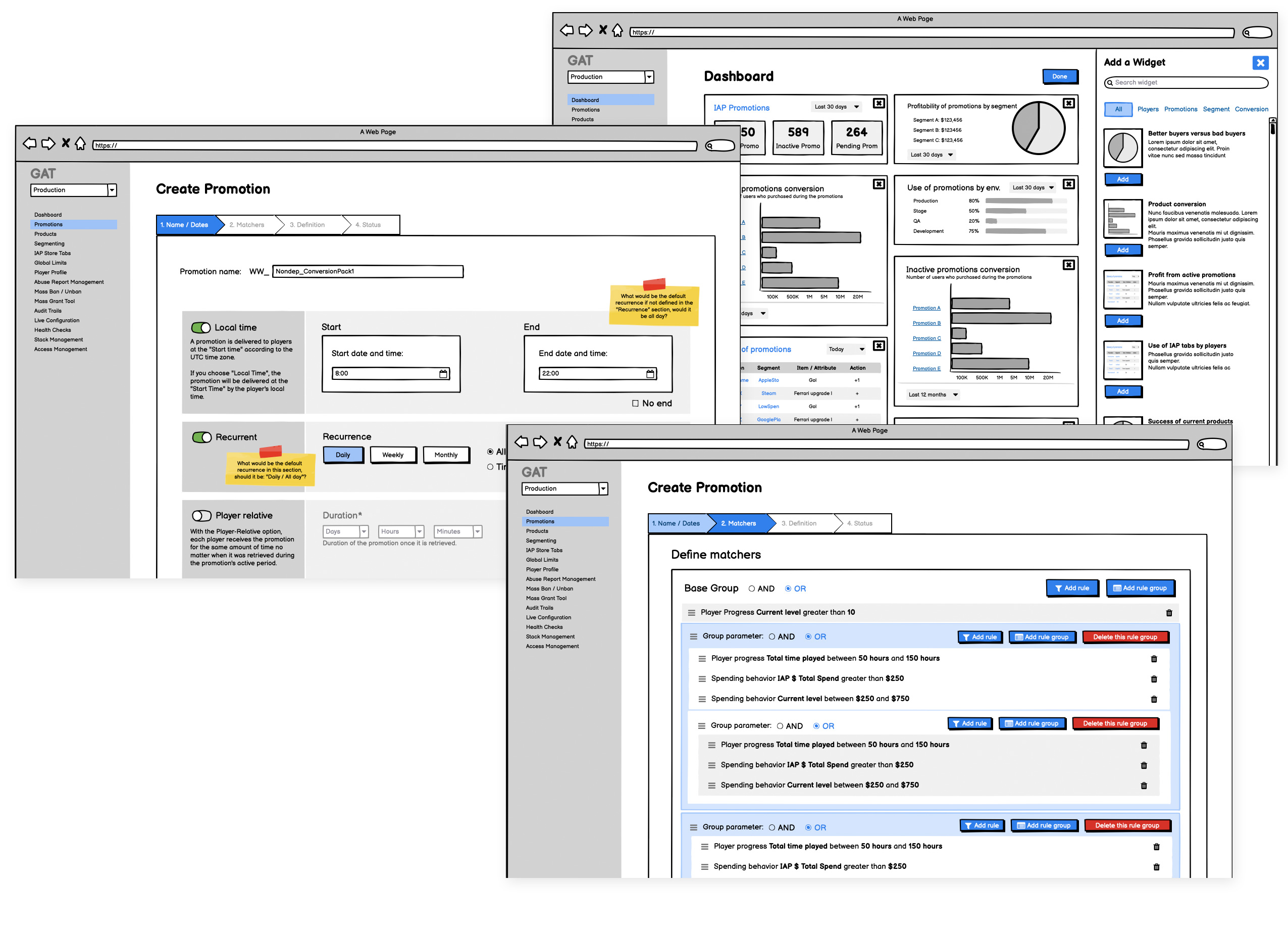
Organizing the wishlist.
With so many things to change, the first step was to define which processes / functionalities / flows or sections were the most critical for the business, which ones were the most valuable for users, and which ones were the most important for differentiating us (or could differentiate us) from the competition.
I gathered information from stakeholders, conducted questionnaires and interviews with users, and conducted market research that culminated in a SWOT analysis and a Red Route Analysis of the current system, along with a comparison with the closest competitors and the best in the market.
Unifying visions.
An important part of the redesign and enhancement process of the system was to unify the vision of what was most important and urgent. With so many things to improve, each stakeholder had their own vision of how and in which direction to progress.
The solution was to hire a Head of Product who had a strategic and unified vision of the business + technology + future + competition, and take the helm of the ship to steer it to a safe harbor.
The challenge.
The most challenging and complicated aspect within the system was not the analysis of flows with hundreds of variables and processes, nor the improvement of the information architecture, and much less the change of the system's Look & Feel.
The most difficult part was that we had to implement all these changes in a system that was "live" and functioning with over 40K users.
Historically, in 98% of the SaaS projects I've been involved in, I worked on the new system without interfering with the previous one; the "legacy" system continued to function without interruption until the new one was completed and migration took place, but this was not the case here.
More impact with less effort.
The guideline for prioritization was clear, taking into account market research, user feedback, and business objectives. Considering how delicate it was to make deep changes in an active system (changes in complete flows, front-end components, or frameworks), we had to filter all changes through two factors:
1. The level of positive impact the change/adjustment/functionality would have for the user, business, or positioning.
2. The effort required to carry it out.
Value in every action.
Focusing on changes that had the most impact with the least effort possible, we concentrated on providing the greatest value in each of the changes made to the system, from information architecture to redesigning the most important flows, the help system, and proposals for new functionalities.
I played a very important role accompanying the BAs and TLs in the ideation, modification, and documentation phase of the functionalities to evaluate their implementation in the roadmap for each quarter.
Redesigned task flows
28
Tasks related to payroll, employee absenteeism, legal matters, vacation management, and performance evaluations, among others.
Redesigned screens
257
Redesign of previous screens and creation of screens for new functionalities.
